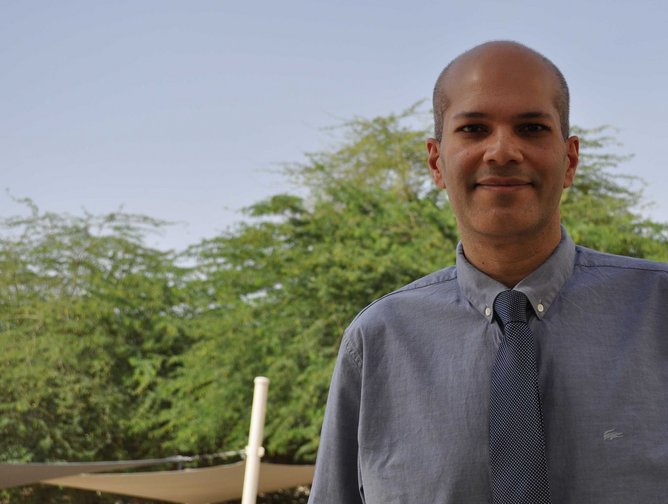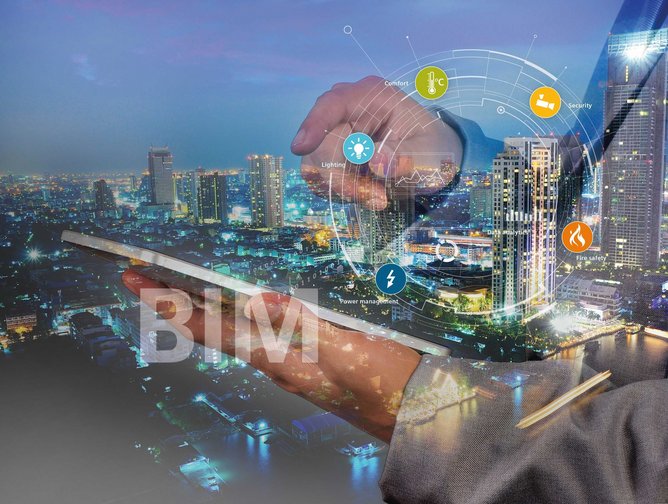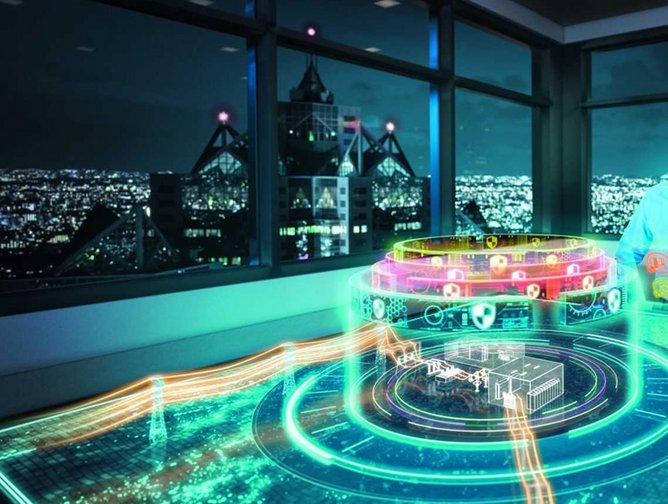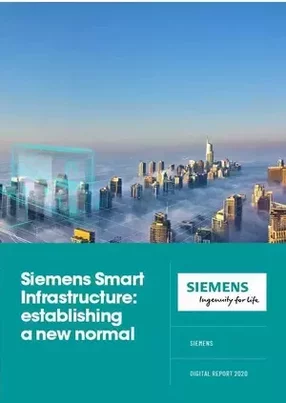Multinational conglomerate Siemens is a vast business of over 300,000 employees, with history dating back over 170 years. Among its other operations, such as energy and manufacturing, Siemens operates a Smart Infrastructure division dedicated to a 21st century approach to buildings. Ahmad Farrakh Manzoor is Head of Siemens Smart Infrastructure - Regional Solutions and Services, for Saudi Arabia and Bahrain.
Siemens Smart Infrastructure’s mission of ensuring buildings remain safe and secure has taken on a new level of importance in the current COVID-19 pandemic. “We can help to ensure hospitals remain enabled to serve more patients,” says Manzoor. “Siemens is a company that provides essential services to essential services. Therefore, there is a lot of demand right now - which we are keeping up with. We have not let our customers down even at this critical point. And I have to thank all of our Siemens employees out there who continue to go to customer sites and provide the services that ensure these utilities keep running. We still have water, power, internet and healthcare, in part because we at Siemens Smart Infrastructure are ensuring we keep that running for our customers.”
Even before the pandemic, there was an imperative to make smart what had previously been ‘dumb’. “If you're not making infrastructure smart, then it’s going to haunt us in the future,” Manzoor explains. “That’s where Siemens Smart Infrastructure comes in. As the name indicates, we make infrastructure smart. How do we do it? We make infrastructure talk to us. Normally, if you’re feeling too hot, you just decrease the thermostat. There, the communication is going one way - from you to the building. What we try to do is make buildings communicate with us.”
Such feats can only be accomplished by the use of advanced technology, such as artificial intelligence and the internet of things (IoT). “When we put AI in buildings, we no longer need to tell them we’re feeling too hot. The building can sense your comfort. It can sense the outside temperature, it can sense whether there is a sand storm, as we often have in the Middle East, it can sense if there is rain coming, if the humidity is too high or too low and then, using those analytics and those sensors, it can adjust the environment in the building. Similarly, we have solutions for power resilience. Now every building could be a power plant. In Germany, there are millions of power plants in every city, and it’s similar here in the Middle East and in the US.”
Safety is another topic immeasurably improved by smart infrastructure. “For example,” Manzoor says, “if there is a fire alarm or an evacuation needed, instead of just sounding a fire alarm, Siemens Smart Infrastructure could also send a tweet to you on your mobile phone specifying where the fire is and which exit to take. This intelligence can be built into those buildings using our technology, to make those buildings and the users happier.”
Siemens is now dedicated to answering the question of how such technology can help our lives to return to the ways they were. Thanks to its extensive smart building experience, it’s a question the company is very well equipped to answer. “We’re coming up with a lot of use cases for the ‘new normal’ - they are being developed on a weekly, even a daily basis,” says Manzoor. “There are many, many new ideas of what the ‘new normal’ is going to look like in an office environment. As offices around the world start to open up, our Siemens technology will be integral to getting back to work.”
One potential solution lies in reducing the spread of airborne and surface contaminants. This can be achieved through the ionisation of contaminants with Siemens non-ozone producing ionisation technology. Ultraviolet can be used to kill bacteria, fungi and some viruses, while new HVAC maintenance strategies and advanced filtration can improve air quality and reduce the spread of viruses.
The maintenance of social distancing is another area where Siemens’ technology has a part to play. Office occupancy can be monitored for density using IoT sensors and data analytics, while thermal cameras can screen individuals for evidence of elevated skin temperature. Contact tracing can then be put in place for individuals who do test positive. The number of occupants within a space can also be monitored and controlled thanks either to the use of video analytics or access control readers.
Real-time updates can play their part to sustain safe and healthy working environments, for instance by utilising 24/7 remote monitoring and response, or leveraging analytics and fault detection to identify any issues that may occur. Emergency notifications can then be ‘pushed’ to occupants, alerting them to critical events.
It’s not only offices where Siemens technology has a crucial part to play. Hospitals, of course, have become a focus of late, with Siemens providing the technology for isolation rooms for a number of hospitals. “In a hospital there are negative pressure rooms and positive pressure rooms,” Manzoor explains. “An isolation room needs technology to keep negative pressure in the room so that germs are not spread outside the room. Positive pressure rooms are, for instance, operating rooms, where we want germs to leave. We provide the control and sensor technology to go into those rooms and sense factors such as air pressure, temperature and humidity, and using all of that information, we can then control the air movement.”
Siemens has a long track record of working with hospitals in epidemic situations, with its proven credentials leading to trust from hospitals. “While we have been providing a lot of technology to hospitals in the last three months, we also did this a few years back when we had the SARS epidemic and the MERS epidemic. Now we are providing technology on a larger scale to our customers. There are a lot of hospitals that we're working with, as well as a lot of temporary hospitals, which are being constructed in various countries. We have been deeply involved with some of these hospitals, providing them with Siemens technology in a very fast way. Our people were working around the clock to ensure that temporary hospitals were set up in record time. They had the power distribution, sensors and devices to operate safely and at a very high intensity.”
Siemens has not lasted as many years as it has without building strong and lasting relationships with vendors and customers, says Manzoor. “There are many customers with whom we have a strategic relationship. We’re a large company, present in over 170 countries around the world, and a lot of our customers also have a similar global footprint. So, we have these deep partnerships with our customers stemming from our global account management organisations, meaning we can provide the same standard of service in each and every country or region.”
It’s thanks to that commitment that Siemens has achieved the level of success that it has. “Siemens has a long history of innovation, of excellence and also of reliability,” says Manzoor. “If you look at the Siemens brand anywhere in the world, you have those parts. That’s why we’re one of the best-known brands in the world and one of the highest regarded companies for customer service.”





